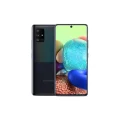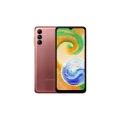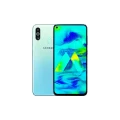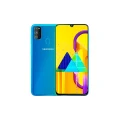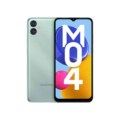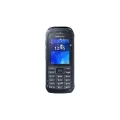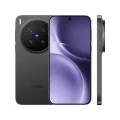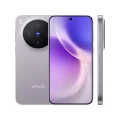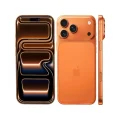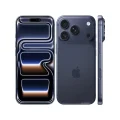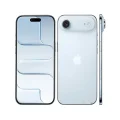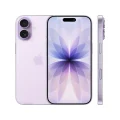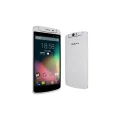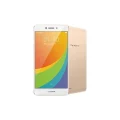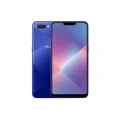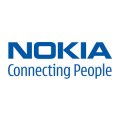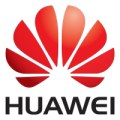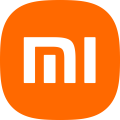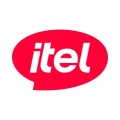- Home
- All Products
- Samsung
- Samsung Galaxy Z Flip7
Samsung Galaxy Z Flip7
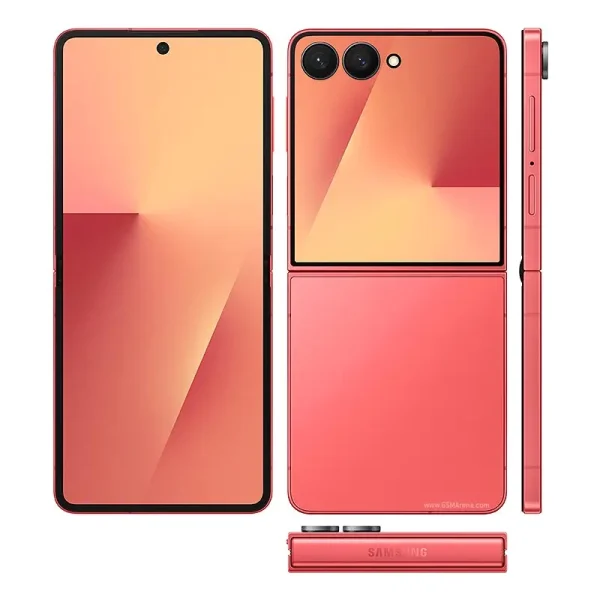

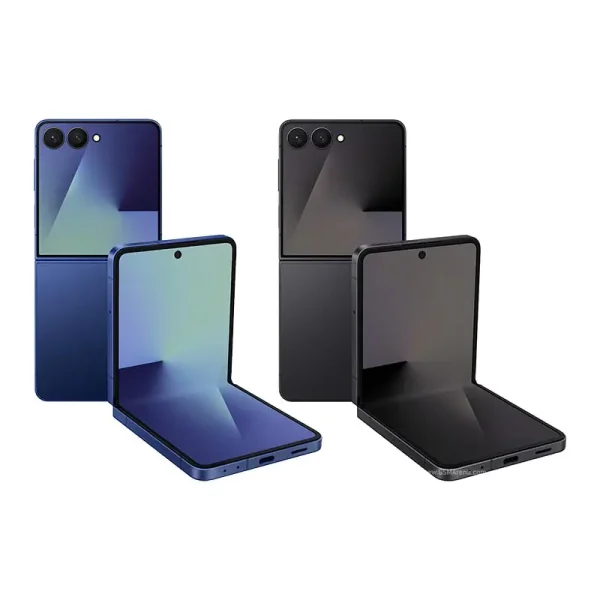

-
Battery: 4300 mAh
-
RAM: 12GB
-
Storage: 256GB, 512GB
-
Display: Foldable Dynamic LTPO AMOLED 2X, 6.9 inches
-
Camera: Rear 50MP+12MP, and Front 10MP
-
OS: Android 16, up to 7 major Android upgrades, One UI 8
Full Specifications
Price
| Official | 139990 BDT 12GB/256GB Approx. |
General
| Model | Samsung Galaxy Z Flip7 |
| Announced | 2025, July 09 |
| Released | 2025, July 25 |
| Status | Available |
Design
| Dimensions | Unfolded: 166.7 x 75.2 x 6.5 mm Folded: 85.5 x 75.2 x 13.7 mm |
| Weight | 188 g (6.63 oz) |
| SIM SIM (Subscriber Identity Module) is a small card that contains mobile network subscriber's account information. This allows the phone using the card to attach to a mobile network. The SIM card is most commonly associated with GSM and UMTS mobile networks. Moving a SIM card from one phone to another allows a subscriber to switch mobile phones without having to contact their mobile network carrier. SIM cards can also be used by a phone to store limited amounts of data, such as phone numbers and text messages. |
Nano-SIM + eSIM + eSIM (max 2 at a time) Nano-SIM + multiple eSIM (max 2 at a time) |
| Colors | Blue Shadow, Jet Black, Coral Red, Mint |
Display Specification
| Display Type Display Technology => A number of display technologies and types used in mobile phones => TFT (Thin Film Transistor), IPS (In-Place Switching), OLED (Organic Light Emitting Diode), AMOLED (Active-Matrix Organic Light-Emitting Diode), Super AMOLED (an even advanced version of AMOLED), Resistive Touchscreen (Resistive touchscreens contain two layer of conductive material with a very small gap between them which acts as a resistance), Capacitive Touchsceen (Capacitive touchscreen technology consists of a layer of glass coated with a transparent conductor) | Foldable Dynamic LTPO AMOLED 2X, 120Hz, HDR10+, 2600 nits (peak) Cover display: Super AMOLED, 120Hz, 2600 nits (peak), |
| Size | 6.9 inches, 111.2 cm2 (~88.7% screen-to-body ratio) |
| Resolution |
1080 x 2520 pixels, 21:9 ratio Cover display: 4.1 inches, 948 x 1048 pixels (Gorilla Glass Victus 2) |
| Refresh Rate | 120Hz |
| Pixel Density Pixel Density (PPI) is refers to the concentration of pixels on a particular display, measured in pixels per inch (ppi). Pixel density is calculated by dividing the diagonal pixel resolution of a display by its diagonal size, higher pixel density better display quality. | 397 ppi density |
| Features |
Plastic front (unfolded), glass back (Gorilla Glass Victus 2), aluminum frame IP48 dust and water resistant (dust > 1mm; immersible up to 1.5m for 30 min) Armor aluminum frame |
Platform
| Operating System OS => Every computer system run on a base software called Operating System (OS). Operating System controls all basic operations of the computer (such as smartphone, PDAs, tablet computers and other handheld devices). The Operating System allows the user to install and run third party applications (apps), apps are used to add new functionality to the device. | Android 16, up to 7 major Android upgrades, One UI 8 |
| Chipset Chipset is a group of integrated circuits designed to perform one or a more dedicated functions, often with real time computing constraints, Popular smartphones are equipped with more advanced embedded chipsets that can do many different tasks depending on their programming. | Exynos 2500 (3 nm) |
| CPU CPU (Central Processing Unit) mostly known as processors, CPU processes instructions in order to carry out certain functions that make your device operate properly. Processors are often described as the brain of computers, smartphones and tablets, Smartphones and tablets rely on processors to carry out their every task, Processors are an incredibly important factor in selecting any type of computing device, including your smartphone. | 10-core (1x3.3GHz Cortex-X5 & 2x2.74GHz Cortex-A725 & 5x2.36GHz Cortex-A725 & 2x1.8GHz Cortex-A520) |
| GPU GPU (Graphics Processing Unit) is a single-chip processor designed to rapidly manipulate and alter memory to accelerate the creation of images in a frame buffer intended for output to a display, This includes things such as lighting effects, object transformations, and 3D motion. | Xclipse 950 |
Main Camera
| Camera Setup | Dual |
| Resolution |
50 MP, f/1.8, 23mm (wide), 1/1.57", 1.0µm, dual pixel PDAF, OIS 12 MP, f/2.2, 13mm, 123˚ (ultrawide), 1/3.2", 1.12µm |
| Features | LED flash, HDR, panorama |
| Video | 4K@30/60fps, 1080p@60/120/240fps, 720p@960fps, HDR10+ |
Selfie Camera
| Camera Setup | Single |
| Resolution | 10 MP, f/2.2, 23mm (wide), 1/3.0", 1.22µm |
| Video | 4K@30/60fps |
| Features | HDR |
Network & Connectivity
| Technology | GSM / CDMA / HSPA / EVDO / LTE / 5G |
| Speed | HSPA, LTE (CA), 5G |
| Wi-fi Wi-Fi is a popular wireless networking technology using radio waves to provide high-speed network connections that allows devices to communicate without cords or cables, Wi-Fi is increasingly becoming the preferred mode of internet connectivity all over the world. | Wi-Fi 802.11 a/b/g/n/ac/6e/7, tri-band, Wi-Fi Direct |
| Bluetooth Bluetooth is a wireless communications technology for exchanging data between mobile phones, headsets, computers and other network devices over short distances without wires, Bluetooth technology was primarily designed to support simple wireless networking of personal consumer devices. | 5.4, A2DP, LE |
| NFC NFC (Near field communication) is a set of standards for smartphones and similar devices to establish peer-to-peer radio communications with each other by touching them together or bringing them into proximity, usually no more than a few inches. | Yes |
| Positioning | GPS, GALILEO, GLONASS, BDS, QZSS |
| FM Radio | No |
| Infrared port | Yes |
| USB | USB Type-C 3.2, OTG |
| 2G Network |
GSM 850 / 900 / 1800 / 1900 CDMA 800 / 1900 |
| 3G Network |
HSDPA 850 / 900 / 1700(AWS) / 1900 / 2100 HSDPA 850 / 900 / 1900 / 2100 CDMA2000 1xEV-DO |
| 4G Network | 1, 2, 3, 4, 5, 7, 8, 12, 13, 17, 18, 19, 20, 25, 26, 28, 38, 39, 40, 41, 66 - International |
| 5G Network |
1, 2, 3, 5, 7, 8, 12, 20, 25, 26, 28, 38, 39, 40, 41, 66, 71, 77, 78 SA/NSA/Sub6 - International SA/NSA/Sub6/mmWave - USA |
Battery
| Battery Type Battery Type => Cell phones run on various kinds of batteries depending on the manufacturer, phone size or shape and features. There are basically four types of cell phone batteries => Lithium Polymer, Lithium Ion, Nickel Metal Hydride and Nickel Cadmium. | Li-Ion (Lithium Ion) |
| Capacity Battery Capacity is a measure (typically in Amp-hr) of the charge stored by the battery, and is determined by the mass of active material contained in the battery. The battery capacity represents the maximum amount of energy that can be extracted from the battery under certain conditions. | 4300 mAh |
| Removable | Yes |
| Charging |
25W wired, QC2.0, 50% in 30 min 15W wireless 4.5W reverse wireless |
| Wireless Charging Wireless Charging (Inductive Charging) uses an electromagnetic field to transfer energy between two objects. This is usually done with a charging station. Energy is sent through an inductive coupling to an electrical device, which can then use that energy to charge batteries or run the device. | Yes |
Multimedia
| Loudspeaker | Yes, with stereo speakers |
| Audio Jack | No |
| Audio Features | 32-bit/384kHz audio |
Storage
| Card Slot Memory Card Slot is a special slot for inserting a memory card. Memory cards allow you to expand the phone's built-in memory, A memory card (sometimes called a flash memory card or a storage card) is a small storage medium used to store data such as text, pictures, audio, and video, for use on small, portable or remote computing devices such as mobile phones, mp3 players, digital cameras. | No |
| Internal Storage Internal Storage is a data storage space (flash memory) mostly used in smartphones, tablets and other electronic devices where operating system, apps, music, photos, videos, files and other user data Is stored. |
256GB 12GB RAM, 512GB 12GB RAM UFS 4.0 |
Sensors
| Fingerprint | Yes (side-mounted), |
| Other Sensors | accelerometer, gyro, proximity, compass, barometer Circle to Search Samsung DeX (desktop experience support) |
PROS
- Largest cover display in any flip phone with edge-to-edge design
- Significant battery upgrade (4300mAh vs 4000mAh predecessor)
- Flagship Exynos 2500 performance with 12GB RAM
- Enhanced AI photography features and ProVisual engine
- Thinner profile despite a larger battery
- Premium build quality and materials
- 7 years of guaranteed Android updates
- Improved outdoor visibility with Vision Booster
- Multiple storage options up to 1TB
- Advanced FlexWindow functionality for productivity
CONS
- No expandable storage despite high-end positioning
- Foldable display still uses plastic material
- Premium pricing expected for flagship model
- Battery life may still be challenged by dual displays
- Potential durability concerns with moving parts
- Limited to Exynos processor (regional variations possible)
- No headphone jack
- May have a learning curve for new Flex Window features
About the Samsung Galaxy Z Flip7
The Samsung Galaxy Z Flip7 is Samsung’s flagship flip phone, announced in July 2025, representing a significant evolution in the company’s foldable technology. This premium clamshell device features a larger 6.9-inch main display with enhanced brightness and 2,600 nits of peak brightness and a smooth 120Hz refresh rate.
The standout feature is the 4.1-inch FlexWindow with ultra-thin 1.25-millimeter bezels, allowing the display to span nearly the entire cover, providing an unprecedented cover screen experience. The Galaxy Z Flip 7 has had something of a design overhaul with a full-screen cover display and larger main screen, making it thinner than the Razr 60 Ultra, measuring 75.2 x 166.7 x 6.5mm when folded. Powered by the Exynos 2500 chipset and running Android 16 with One UI 8, it promises to deliver flagship performance in a compact, pocketable form factor.
Main Key Features
- Enhanced FlexWindow: 4.1-inch edge-to-edge cover display with ultra-thin bezels
- Main Display: 6.9-inch Dynamic AMOLED 2X, 120Hz, 2600 nits peak brightness
- Processor: Exynos 2500 (4nm) flagship chipset
- Memory: 12GB RAM standard (16GB on 1TB model)
- Storage: 256GB/512GB/1TB options with UFS 4.0
- Battery: 4300mAh (300mAh increase from predecessor)
- Camera System: 50MP main camera with ProVisual engine, 12MP ultrawide
- Software: Android 16, One UI 8, 7 major upgrades guaranteed
- AI Features: Enhanced AI-powered photography and FlexWindow functionality
- Build: Premium materials with improved durability
- Connectivity: 5G, Wi-Fi 6E, Bluetooth, NFC
Why Choose This Phone?
The Galaxy Z Flip7 is perfect for users who want the ultimate in foldable innovation combined with flagship performance. It’s ideal for those who prioritize having the latest technology, enhanced productivity through the large Flex Window, and premium build quality. The phone appeals to content creators who can benefit from the AI-enhanced camera system and flexible form factor for unique shooting angles. Business professionals will appreciate the expanded Flex Window functionality for quick tasks without unfolding the device. It’s also excellent for users who want a conversation-starting device that combines style with substance, offering flagship specifications in a uniquely compact form factor. The 7-year software support makes it a solid long-term investment for tech enthusiasts.
Opinion
The Galaxy Z Flip7 represents Samsung’s most refined flip phone to date, with the revolutionary edge-to-edge Flex Window being a game-changer for usability. The combination of flagship specs, improved battery life, and enhanced AI features positions it as a serious competitor to traditional candy bar flagships. While the premium pricing may limit its appeal, the technological advances and unique form factor justify the cost for users seeking cutting-edge innovation. It successfully addresses many previous limitations while introducing new capabilities that genuinely enhance the user experience.
See Another Model:
FAQs about Samsung Galaxy Z Flip7
Q: What’s the main difference between the Z Flip7 and Z Flip7 FE?
A: The regular Z Flip7 features the flagship Exynos 2500 processor, 12GB RAM, a larger battery (4300mAh), and premium build materials, while the FE has Exynos 2400, 8GB RAM, and a smaller battery (4000mAh).
Q: How big is the cover display?
A: The Flex Window is 4.1 inches with ultra-thin 1.25-millimeter bezels, spanning nearly the entire cover.
Q: What storage options are available?
A: Galaxy Z Flip7 has 256GB or 512GB storage options, with some regions offering up to 1TB with 16GB RAM.
Q: What’s the battery capacity?
A: The Samsung Galaxy Z Flip 7 has a 4,300mAh battery, which is 300mAh larger than its predecessor.
Q: What camera improvements does it offer?
A: The high-resolution 50MP camera with Pro Visual engine delivers rich, detailed shots with more accurate skin tones and AI-enhanced features.
Give Your Review
Disclaimer Note
You can write your own disclaimer from APS Settings -> General -> Disclaimer Note.
